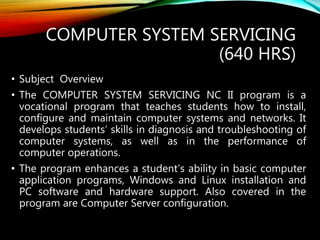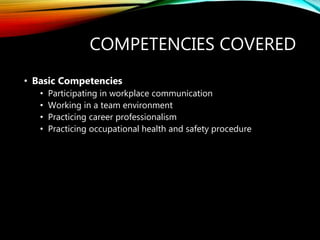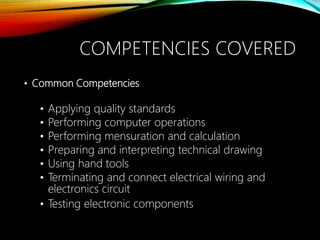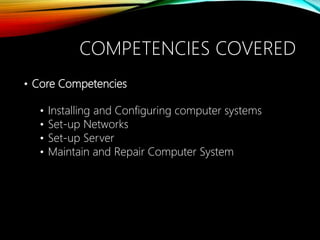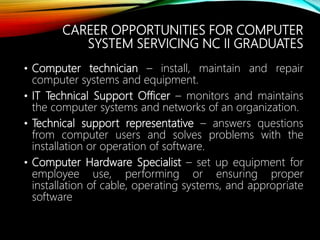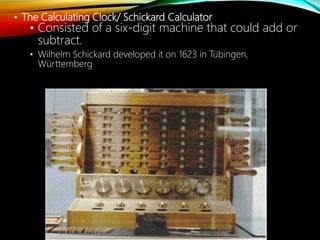The document provides information about the Computer System Servicing NC II program. It discusses the key competencies covered in the program which include installing, configuring and maintaining computer systems and networks. The program enhances students' skills in computer operations, applications, and hardware and software support. It also identifies important skills, traits and attitudes needed like technical skills, computer literacy, problem solving and patience. Assessment methods involve written tests, hands-on activities and interviews.
